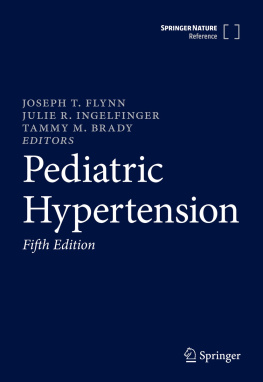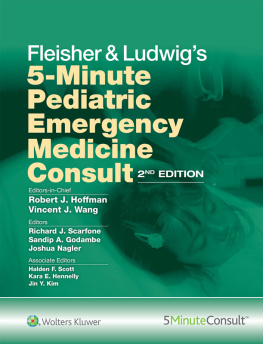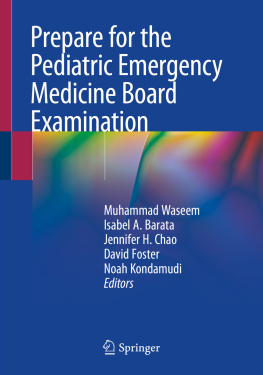Abbreviations
bid | twice per day |
BP | blood pressure |
cm | centimeters |
CNS | central nervous system |
CSF | cerebrospinal fluid |
dl | deciliter |
D5W | 5% dextrose in H2O (D10W, 10% dextrose; D25W, 25% dextrose; D50W, 50% dextrose) |
ET | endotracheal |
F | French |
g | grams |
Hb | hemoglobin |
HR | heart rate |
ICP | intracranial pressure |
Ig | immunoglobulin |
IM | intramuscular |
IV | intravenous |
J | joules |
kg | kilogram |
m2 | square meter |
mcg | micrograms |
mEq | milliequivalent |
ml | milliliters |
mm | millimeters |
ms | milliseconds |
NS | normal saline |
O2 | oxygen |
PO | by mouth |
PMN | neutrophil |
PR | by rectum |
prn | as needed |
RR | respiratory rate |
SC | subcutaneous |
A table lists appearances of bruises over time.
The table shows the following information. First, bruises of any color, that is, red, blue, purple, yellow, green, and gray can occur at any time. Second, evidence for accurately dating bruises is lacking. Third, abuse should be suspected if injuries occur over non-bony prominences such as ears, neck, face, hands, back, buttocks, forearm, foot, and abdomen, especially in children less than 4 years, or if the mechanism does not fit the injury pattern.
A table lists bony injuries associated with child abuse.
There are two columns. Row 1: Fractures associated with a high or moderate specificity for abuse. Rib fractures especially posteromedial have highest probability of abuse, scapular fractures, sternal fractures; Metaphyseal-epiphyseal fractures for example, corner fractures or bucket-handle fractures, and metaphyseal lucency; Spinous process, vertebral body fractures and subluxations; Fractures in different stages of healing or delayed presentation; Fractures inconsistent with history or developmental age; Skull fractures, that is, if multiple, bilateral, or cross suture lines; Pelvic fractures, that is, rare or spine fractures without significant force; Femur fractures in nonambulatory patients; Midshaft humeral fractures less than or equal to 1 to 2 years old. Row 2: Fractures associated with a low specificity for abuse. Clavicle fractures due to birth, that is, infants less than 22 days, or infants less than 30 days with a healing fracture; Distal tibia spiral fractures or toddlers fracture, unless nonambulatory; Supracondylar fractures, fractures of the hands or feet except digital fractures in nonambulatory infants or multiple fractures; Torus fractures of long bones.
A table lists appearances of fracture over time.
There are two columns: Age of fracture and fracture appearance. Row 1: 4 to 10 days; Resolution of soft tissue swelling. Row 2: 10 to 14 days; New periosteal bone. Row 3: 14 to 21 days; Fracture line definition lost and soft callus present. Row 4: 21 to 42 days; Hard callous present. Row 5: 2 to 24 months; Remodeling of fracture.
A table lists head injury associated with abuse.
The table shows the following information. First, subdural hematoma; Second, extra-axial hemorrhages especially interhemispheric, multiple bleeds, or in posterior fossa; Third, parenchymal brain injury, for example, contusion, axonal injury, or laceration; Fourth, retinal hemorrhage, that is, usually bilateral.
A table lists age-based estimates for vital signs and weight.
There are six columns: Age, Weight in kg, Heart rate superscript 1 BPM superscript asterisk, Respiratory rate per minute, Systolic BP superscript 2 millimeters of mercury, and Diastolic BP superscript 2 millimeters of mercury. Row entries are as follows. Row 1: Premature; 1; 145; approximately equal to 40; 42 plus minus 10; 21 plus minus 8. Row 2: Premature; 1 to 2; 145; approximately equal to 40; 40 plus minus 10; 28 plus minus 8. Row 3: New born; 2 to 3; 125; approximately equal to 40; 60 plus minus 10; 37 plus minus 8. Row 4: 1 month; 4; 120; 24 to 35; 80 plus minus 10; 46 plus minus 16. Row 5: 6 months; 7; 130; 24 to 35; 89 plus minus 29; 60 plus minus 10. Row 6: 1 year; 10; 120; 20 to 30; 96 plus minus 30; 66 plus minus 25. Row 7: 2 to 3 years; 12 to 14; 115; 20 to 30; 99 plus minus 25; 64 plus minus 25. Row 8: 4 to 5 years; 16 to 18; 100; 20 to 30; 99 plus minus 20; 65 plus minus 20. Row 9: 6 to 8 years; 20 to 26; 100; 12 to 25; 100 plus minus 15; 60 plus minus 10. Row 10: 10 to 12 years; 32 to 42; 75; 12 to 25; 110 plus minus 17; 60 plus minus 10. Row 11: greater than 14 years; greater than 50; 70; 12 to 18; 118 plus minus 20; 60 plus minus 10.
A table lists resuscitation equipment: first drug dose based on length, weight, or age superscript 1.
There are eight columns: Age, 3 months, 6 months, 1 year, 2 years, 3 years, 5 years, and 10 years. Row entries are as follows. Row 1: Length in centimeters; 50 to 58; 58 to 70; 70 to 85; 85 to 95; 95 to 107; 107 to 124; 138. Row 2: Weight in kilograms; 5 to 6; 7 to 8; 9 to 11; 12 to 14; 15 to 17; 18 to 24; 32. Row 3: Bag mask; Infant; Infant; Child; Child; Child; Child; Adult. Row 4: Oral airway; Infant; Infant; Child; Child; Child; Child; Sm superscript 2 adult. Row 5: LMA; 1; 1; 2; 2; 2; 2.5; 3. Row 6: O2 mask; New born; New born; Peds; Peds; Peds; Adult; Adult. Row 7: ET tube superscript 3; 3 to 3.5; 3.5 to 4; 3.5 to 4; 4 to 4.5; 4.5; 5; 6 to 6.5. Row 8: Laryngoscope; 1 Miller; 1 Miller; 1 Miller; 2 Miller; 2 superscript 4; 2 superscript 4; 2 to 3 superscript 4. Row 9: Suction catheter; 8F; 8F; 8 to 10F; 10F; 10F; 10F; 10F. Row 10: NG tube; 5 to 8F; 5 to 8F; 8 to 10F; 10F; 10 to 12F; 12 to 14F; 16 to 18F. Row 11: Urine catheter; 5 to 8F; 5 to 8F; 8 to 10F; 10F; 10 to 12F; 10 to 12F; 12 to 14F.
A table lists CPR maneuvers and techniques in new-borns, infants, and children.
There are four columns: Maneuver, newly born or neonate, infant that is, less than 1 year, and child, that is, 1 to 8 years. Row entries are as follows. Row 1: Open Airway; Head tilt, chin lift or jaw lift without head tilt if trauma in all ages. Row 2: Breathing, that is, initial; May require 30 to 40 centimeters H2O pressure; Two breaths to make chest rise; Two breaths to make chest rise. Row 3: Subsequent, that is, if no CPR; 30 to 60 breaths per minute; 12 to 20 breaths per minute; 12 to 20 breaths per minute. Row 4: Subsequent, that is, during CPR; 30 to 60 breaths per minute; 8 to 10 breaths per minute; 8 to 10 breaths per minute. Row 5: Circulation superscript 1, that is, Check pulse; Umbilical or brachial; Brachial or femoral; Carotid. Row 6: Compress at; Lower one-third sternum; Lower one-third sternum; Lower one-third sternum. Row 7: Compress with; Two thumbs encircle chest with hands; Two thumbs encircle chest with hands; Heel of one hand. Row 8: Depth; One-third depth of chest for all listed ages. Row 9: Rate superscript 2; 120 per minute; 100 to 120 per minute; 100 to 120 per minute. Row 10: Ratio superscript 3, 4; 3 in ratio to 1, that is, interpose breaths; 15 in ratio to 2; 15 in ratio to 2. Row 11: Foreign Body Airway Obstruction superscript 5; Back blows, and chest thrusts; Back blows, and chest thrusts; Chest thrust, back blows, or abdominal thrusts.
Next page






